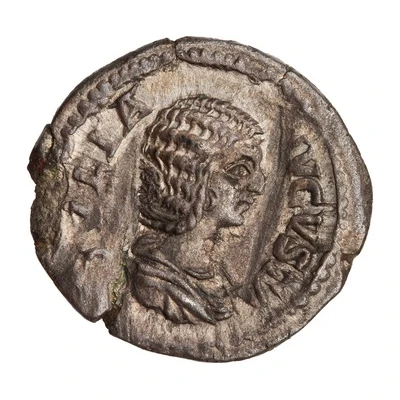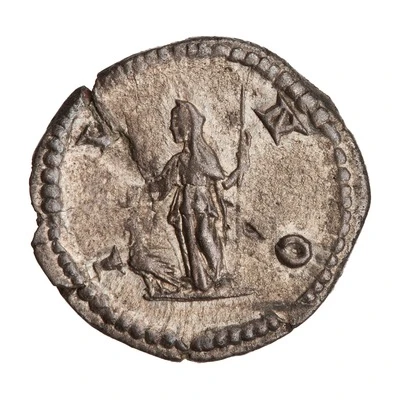Quinarius - Julia Domna PIETAS AVGG; Pietas
| Silver | - | - |
| Issuer | Rome › Roman Empire (27 BC - 395 AD) |
|---|---|
| Empress | Julia Domna (193-211) |
| Type | Standard circulation coin |
| Years | 196-211 |
| Value | Silver Quinarius = ½ Denarius |
| Currency | Denarius, Reform of Augustus (27 BC – AD 215) |
| Composition | Silver |
| Shape | Round (irregular) |
| Technique | Hammered |
| Demonetized | Yes |
| Updated | 2024-10-06 |
| Numista | N#269940 |
|---|---|
| Rarity index | 100% |
Reverse
Pietas, veiled, draped, standing left, dropping incense on lit altar at left and holding box in left hand.
Script: Latin
Lettering: PIETAS AVGG
Translation:
Pietas Augustorum.
Piety of the emperors (Augusti).
Comment
Source:Online Coins of the Roman Empire (OCRE)
Interesting fact
The Quinarius - Julia Domna coin was minted during the reign of Emperor Septimius Severus (193-211 AD), who was known for his extensive reforms and military campaigns. One of his most significant reforms was the introduction of a new currency system, which included the Quinarius coin. The Quinarius was a silver coin that was equivalent to one-fourth of a denarius, the standard Roman silver coin. The Quinarius coin was designed to be more accessible to the general population, as it was smaller and less expensive than the denarius. The obverse of the Quinarius - Julia Domna coin features an image of the empress Julia Domna, who was the wife of Septimius Severus and a powerful figure in her own right. She was known for her intelligence, political influence, and patronage of the arts. The reverse of the coin features an image of Pietas, the Roman goddess of duty and devotion, who was often depicted as a woman offering a sacrifice. The inscription "PIETAS AVGG" on the coin translates to "Piety of the Emperors," highlighting the importance of piety and devotion in Roman culture. Overall, the Quinarius - Julia Domna coin is an interesting example of Roman currency and culture during the late 2nd and early 3rd centuries AD. It provides insight into the economic and political reforms of the time, as well as the cultural values and beliefs of the Roman people.

